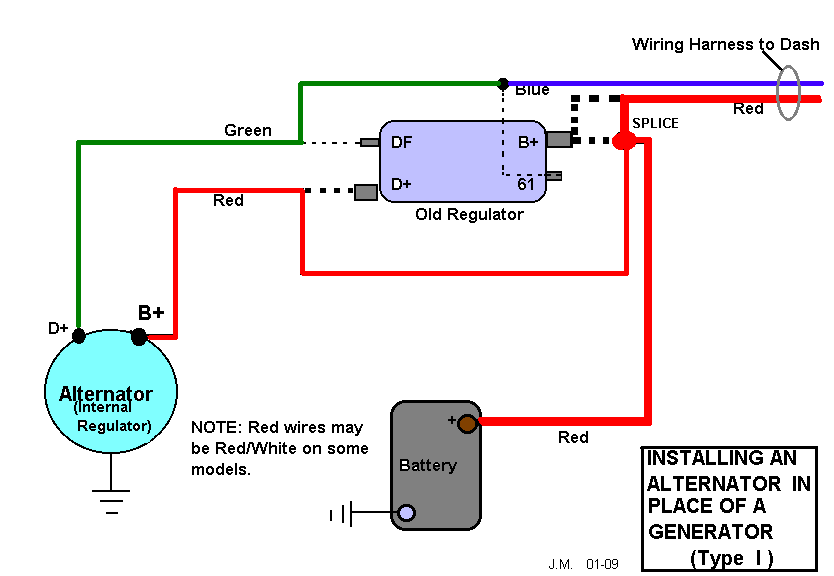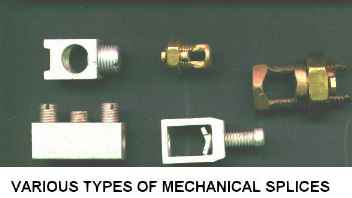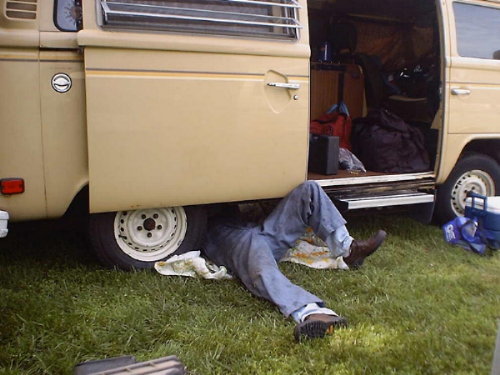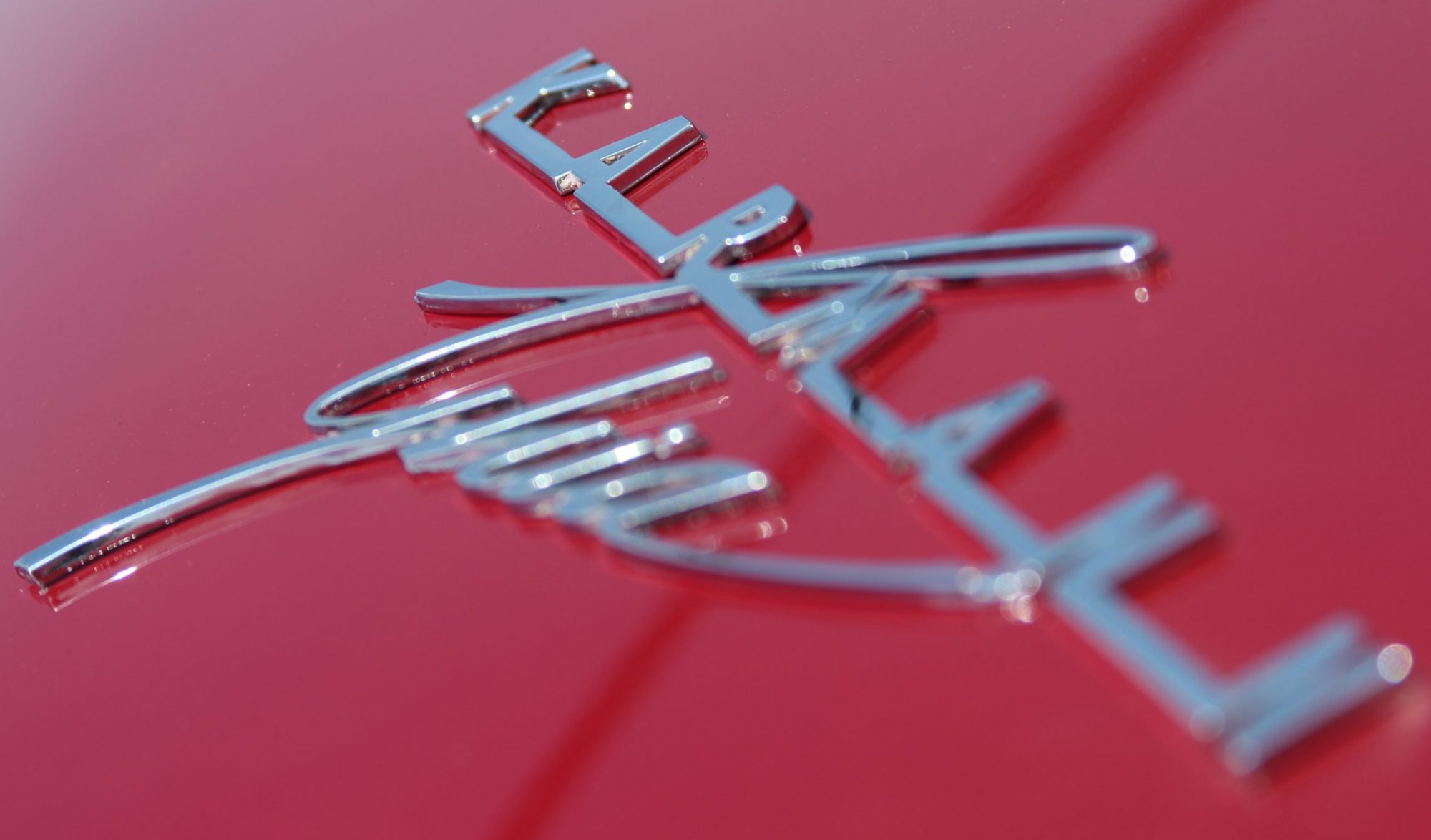I’ve always liked how the early 60’s Ghias had the ignition switches in the dash. Perhaps I’ll add this to my mod list.
EFI System: CB’s Gen4 Naturally Aspirated Kit
Even thought about stepping up to electronic fuel injection to complicate your VW’s simple carbureted engine? Even though EFI does add several extra components to your system, you can’t deny its benefits.
Check out this system from CB Performance —-> HERE
How to install Compufire Ignition for VW in a 009 Distributor
Wiring for Generator to Alternator Conversion
http://www.speedyjim.net/schem/gen_alt.htm
Text from the above site…
After the new alternator is installed, you can physically remove the old regulator.
Disconnect the battery first.

Take the two fat RED wires on the B+ terminal on the reg and splice them with the fat RED wire that was on D+. You need a very good splice to do this. Twisting together with duct tape won’t do.

One solution is an electrician’s mechanical splice called a “bug”. Get a small one. There are other suitable splice terminals available as well. Whatever you use, insulate it in shrink tubing or equivalent. You don’t want this part to short out.
You now have three skinny wires left over:
Blue
Green
Brown
Splice the Blue to the Green.
Tape up the Brown.
Back at the new alternator, connect the fat RED wire to the B+ terminal.
(I know; it was connected to D+ on the old generator.)
Connect the Green wire to D+ on the alternator.
This is the dash warning light connection.
That’s it. The carb may have to be raised with a spacer.
The stock setup used a carb with an accelerator pump linkage which rotated clear of the alternator. You can also flop yours around to make it clear.
Volkswagen Technical Articles
From http://type2.com/bartnik/tech1.htm#engine
Volkswagen Technical Articles

This page is an attempt to empower you to fix your own VW and do it correctly. Unfortunately, there are not many mechanics that are familiar with the VW air-cooled engines anymore, and there are some that claim to be VW experts who are really just hacks. Also, since the price of labor to have your car fixed is not affordable to many, it makes good economic sense to learn how to do the work on your Volkswagen yourself.
This page is updated fairly often, and I will try to add as many articles as possible. I’ve been taking pictures of work I’ve done on my van so as soon as they get scanned, this will be like a mini-manual. I’m sure it will be nowhere near complete, but it will cover the more common and basic problems that can be easily fixed by the shadetree mechanic.
The first thing you need if you want to work on your own Volkswagen is a good set of manuals. I highly recommend those listed below.

- “How To Keep Your Volkswagen Alive: A Manual of Step-By-Step Procedures for the Compleat Idiot” by John Muir.
- This book has been around since the ’60s and has been updated much since then. The edition I have now is the 25th anniversary edition. Muir’s book is excellent for the beginner but Muir is by no means the ultimate authority. You have to take a lot of what he says with a grain of salt as not all of his advice is correct. Still, it’s an excellent manual to use in conjunction with other manuals, and Muir’s writing style can make complex issues clearer.
- The Bentley manual.
- The Bentley manuals are the official factory service manuals for Volkswagen. They are put out by Robert Bentley Publishers, hence the name. They are generally very good reference manuals and I highly recommend owning one.
- The Haynes manual.
- Haynes is a British publishing company that puts out manuals on most of the air-cooled Volkswagens. Their manuals are typically readily available and are generally inexpensive.
- “How To Rebuild Your Volkswagen Air-Cooled Engine” by Tom Wilson.
- This book is a step-by-step guide to removing, tearing down, rebuilding, and then re-installing your engine. Even if you don’t plan on getting that deep into your engine, this book is filled with photos that give you a great idea of what’s really going on in there.
In addition to those above, if you have a ’75 or later Beetle or Super Beetle, a ’75 or later Bus, or a ’67 and later Type 3, you should have fuel injection (assuming a US-spec model). In that case, a manual you will find very helpful is “How To Understand, Service and Modify Bosch Fuel Injection and Engine Management” by Charles O. Probst. It’s also put out by Robert Bentley Publishers, the same publisher as the official VW repair manuals. It covers all Bosch fuel injection systems, including the D-Jetronic system found on Type 3s and the L-Jetronic system found on Beetles, Super Beetles, and Buses.
Finally, before you begin wrenching, see this informative tool guide.
DISCLAIMER: Unfortunately, in these litigious times, some moron would probably try to sue me for something regarding the information on this page, so here’s the disclaimer. The procedures on this page are presented as guidelines ONLY. They reflect particular jobs that were done by myself or by another author and were written down from memory as a guide to others who might need to do the same procedure. I make no representations as to the accuracy of the information contained here (please remember that I am not a professional mechanic and that free advice is worth every cent). What you do to your car is what YOU do to your car. I take no responsibility for the results of YOUR actions, lack of common sense, or stupidity. The procedures below were written to help VW owners. They should always be used in conjunction with a good set of repair manuals, such as those mentioned above. Have a nice day.
BRAKES
Replacing rear brake shoes and wheel cylinders on a Bus.
Replacing the front brake pads on a Karmann Ghia.
Replacing the rear brake shoes on a Vanagon.
Replacing the parking brake cables on a Vanagon.
Replacing the master cylinder on a Karmann Ghia.
CLUTCH
Replacing the clutch master cylinder on a Vanagon.
Replacing the clutch slave cylinder in a Vanagon.
Replacing the clutch in an early Vanagon or late Bus (with Type 4 air-cooled engine).
ELECTRICAL AND IGNITION
Removing and replacing the alternator on a ’72-’79 Bus.
Removing and replacing the starter on an air-cooled Volkswagen.
Starter troubleshooting procedure.
Replacing the points and condenser on an air-cooled Volkswagen engine.
Replacing the spark plugs on an air-cooled Volkswagen engine.
Hot-start relay installation instructions.
Ignition timing instructions for air-cooled Volkswagens.
ENGINE
Carburetor removal/replacement on a 1600cc dual port Type 1 engine (Beetle, Karmann Ghia, Thing, Super Beetle).
Engine and transmission removal/installation in an air-cooled, manual transmission Vanagon (1980-1983).
Thermostat replacement/installation on late Buses and early Vanagons with the Type 4 air-cooled engine.
Valve adjustment on a Type 1 engine.
Changing the oil on an air-cooled Volkswagen engine.
Replacing the pushrod tube oil seals on late Buses and early Vanagons with the Type 4 air-cooled engine.
Adjusting the automatic choke on carbureted air-cooled Volkswagen engines.
Adjusting the fan belt on the Type 1 engine.
EXHAUST AND HEATER
Replacing the heater cables on an air-cooled Vanagon.
SUSPENSION
Removing/replacing the front axle beam on a late Bus.
TRANSAXLE
MISCELLANEOUS
What kind of gas should you be buying?
Removing/installing window glass on an air-cooled Volkswagen.
How to torque the rear axle nut without a torque wrench.

